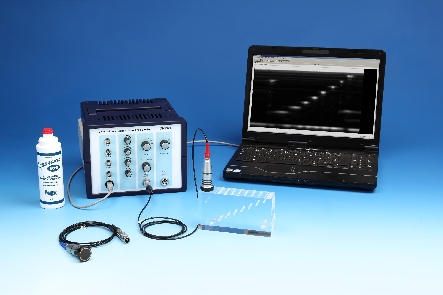setTimeout(function(){
window.print();
},500)

Technical data Ultrasonic echography (B-Scan)Article no: P5160300  Principle The fundamental principles concerning the generation of ultrasonic B-scan images (brightness representation of the reflection amplitudes) are demonstrated with the aid of a simple test object. The experiment is executed with an ultrasonic echoscope in the pulse echo mode and the object is scanned manually. Then, the image quality and the most important image defects will be assessed. Benefits
Tasks
Learning objectives
Scope of delivery
| |||||||||
PHYWE Systeme GmbH & Co. KG
Robert-Bosch-Breite 10 – 37079 Göttingen – Germany
www.phywe.com
Robert-Bosch-Breite 10 – 37079 Göttingen – Germany
www.phywe.com

